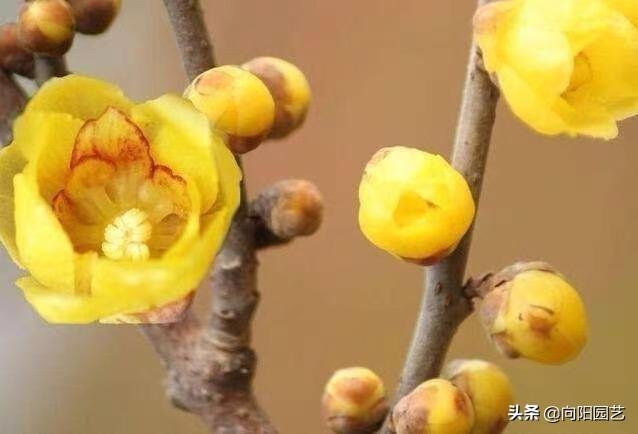青花瓷为元景德镇窑代表瓷器,这是两种极具特色和名贵的品类。青花着色力强,呈色稳定,纹饰永不褪脱,且风格幽靓典雅,素净秀丽。光润透亮的青花釉与素雅明净的白胎巧妙配合,互相衬托,颇具中国水墨画之特色,并且标志着由素瓷转为彩瓷的新时代的到来;元青花以其多层次,满画面,主次分明的装饰特征和以彩绘为主兼刻、划、印花的装饰技法,为中国陶瓷艺术的发展开辟了一条新的途径。

该藏品为青花瓷中的罕见珍品,有着极为独特的青花纹饰,体现了极高的烧制水平。梅瓶是明代高等级墓葬随葬品,有镇墓辟邪的作用。除了是地位的象征外,也有风水上的考虑,非王侯要臣,不得“享用”这种随葬品。 此梅瓶高44.1厘米,底部直径为13厘米,腹部直径28.4厘米,而口径仅为5.5厘米。小口、丰肩、斜腹、敛胫、圈足,造型优美,线条圆润、流畅,雍容华贵,肩腹部绘以“萧何月下追韩信”经典历史人物故事,瓷瓶上所绘的青花纹饰层次多样,非常之独特。

此件梅瓶通体绘有各种青花纹饰,虽然纹饰层次多样,但上下饰的西番莲、杂宝、变形莲瓣纹、垂珠纹等都很好地为萧何月下追韩信这个主体纹饰服务了,从而使得整个器物浑然一体而主题鲜明突出。这件瓷器的画面被放在了梅瓶的腹部,占据着主要的位置 整件器物造型端庄、稳重,胎质洁白致密,青花发色苍翠浓艳,而瓶中所绘人物的生动神情尤其精彩:萧何策马狂奔时胡须被风撩起飘荡、眼神的急切与焦虑;韩信河边彷徨、迷茫与踌躇不定;老艄公持浆而立的静静等待,都被表现的淋漓尽致。而空白处则衬以苍松、梅竹、山石,显得错落有致。梅瓶不仅纹饰宜人漂亮,而且白釉洁净润泽,青花用料浓淡相宜,发色明丽,富有层次感,加之遒劲的拓抹绘瓷笔法,使画面有丹青之妙,周身散发着美器的光泽。堪称元末明初青花瓷中的绝品佳作。

Blue and white porcelain is the representative porcelain of Jingdezhen kiln in the Yuan Dynasty, which are two kinds of highly characteristic and precious categories. Blue and white have strong coloring power, stable color, and the patterns will never fade, and the style is quiet, beautiful and elegant, simple and beautiful. The glossy blue and white glaze and the simple, elegant and clear white fetus are cleverly matched and set off each other, which has the characteristics of Chinese ink painting, and marks the arrival of a new era from plain porcelain to colored porcelain; Yuan blue and white, with its multi-level, full picture, clear primary and secondary decorative characteristics and the decorative techniques of color painting, engraving, drawing and printing, has opened up a new way for the development of Chinese ceramic art.
The collection is a rare treasure among blue and white porcelain, with extremely unique blue and white patterns, reflecting a very high firing level. Plum vase is the funerary objects of high-grade tombs in the Ming Dynasty, which plays a role in restraining tombs and ward off evil spirits. In addition to being a symbol of status, there are also Feng Shui considerations. Non princes and important officials are not allowed to "enjoy" such funerary objects. The plum vase is 44.1 cm high, 13 cm in diameter at the bottom, 28.4 cm in diameter at the abdomen, and only 5.5 cm in diameter. Small mouth, abundant shoulders, oblique abdomen, convergence of shins and encircling feet, beautiful shape, round and smooth lines, elegant and luxurious. The shoulders and abdomen are painted with the classic historical character story of "Xiao He chasing Han Xin under the moon". The blue and white patterns painted on the porcelain vase are diverse and unique.
The whole body of this plum vase is painted with various blue and white patterns. Although the decorative levels are diverse, the passionflower, miscellaneous treasure, deformed lotus petal pattern and hanging bead pattern on the top and bottom serve the main pattern of Xiao He Yuexia chasing Han Xin, so that the whole utensil is integrated and the theme is bright and prominent. The picture of this porcelain is placed on the belly of the plum vase, occupying the main position. The whole object has a dignified and stable shape, white and dense fetus, green and colorful blue and white hair, and the vivid expression of the characters painted in the vase is particularly wonderful: Xiao He's beard is lifted and floated by the wind when driving his horse, and his eyes are eager and anxious; Han Xin wandered, confused and hesitated by the river; The old boatman stood quietly with the slurry, which was expressed incisively and vividly. The blank space is lined with pine, plum, bamboo and mountain stones, which appears to be scattered. Plum Vase not only has pleasant and beautiful patterns, but also the white glaze is clean and moist. The materials used for blue and white are appropriate. The hair color is bright and beautiful, with a sense of hierarchy. In addition, the vigorous extension and painting method of porcelain makes the picture have the beauty of red and blue, and the whole body exudes the luster of beauty. It can be called a masterpiece of blue and white porcelain in the late Yuan and early Ming Dynasties.
,




